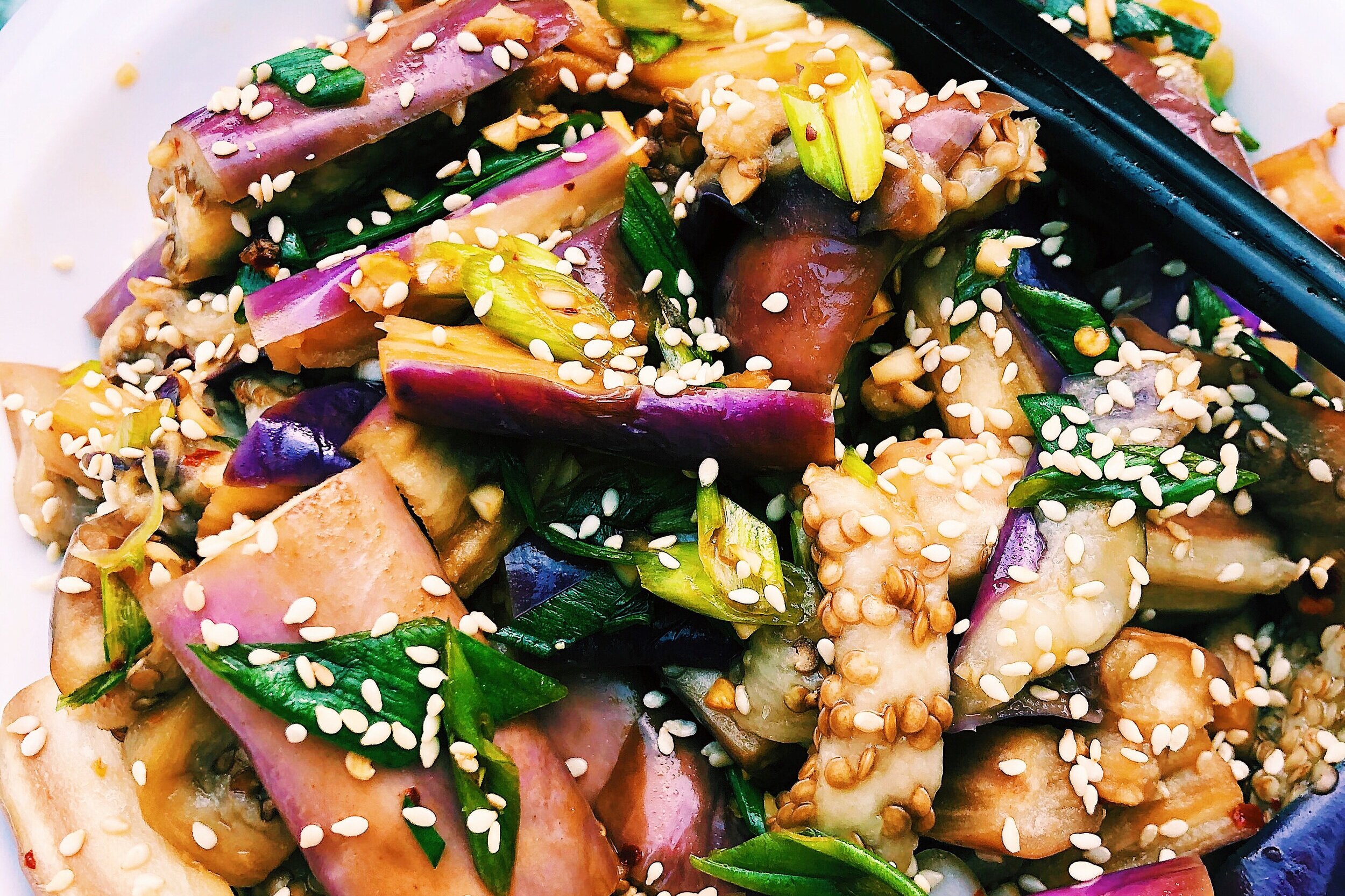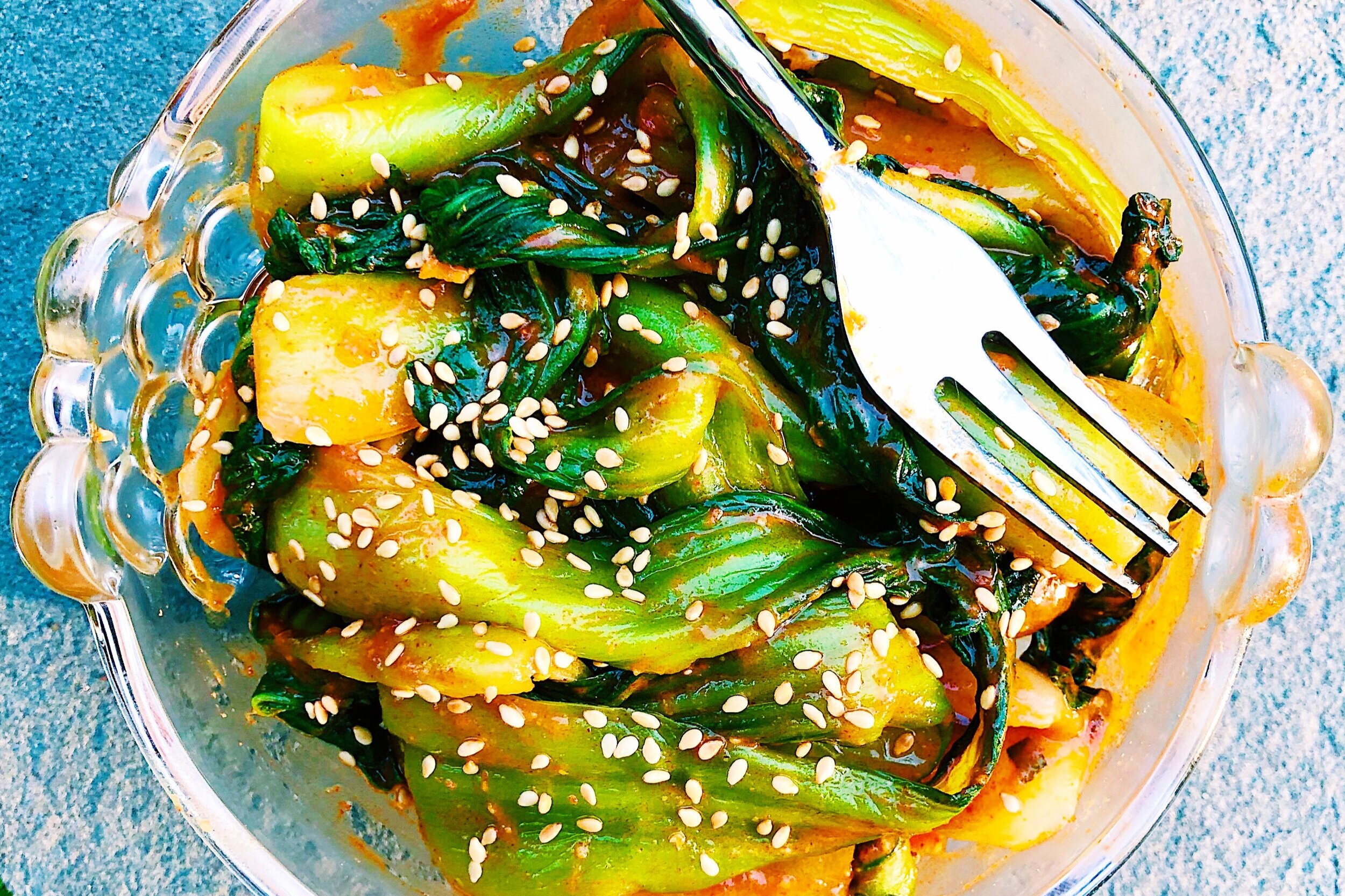Korean
I’ve never been to Korea, have never eaten at a Korean restaurant, and have never cooked a Korean dish before. So coming into Korean week, I was a little overwhelmed with navigating Korean cuisine and concerned if I’d be able to find accessible recipes that my family would enjoy eating. These qualms were quickly quenched when one of my followers introduced me to Maangchi, a Korean-American superstar that has created her own YouTube channel and website with the sole purpose of making Korean cuisine accessible to American home cooks. I spent hours watching her addicting YouTube tutorials. Her outrageous wigs, the way she pronounced “butter,” the transition cuts of swaying trees in her Brooklyn neighborhood, all drew me into Maangchi’s channel. What made me stay—the authentic Korean cooking that looked too good for me not to make. Out of the 6 recipes I tried for Korean week, 5 of them were from Maangchi’s website and the last one I still managed to use some of Maangchi’s tips. One of my concerns was that I would need to find obscure Korean ingredients at a Korean grocery store, but Maangchi’s website has a page for finding Korean ingredients on Amazon. Between Amazon and Whole Foods, I was able to find every ingredient with no issue at all.
Sunday and Monday were the two dessert days. Asian desserts are notorious for being far less sweet than their Western counterparts, which is why I’ve never really ordered them when I’m out to dinner at a Chinese or Japanese restaurant. I didn’t want that to deter me though from trying something new. Both the Sunday and Monday recipes are Korean staples. The former called kkwabaegi (twisted doughnuts) are apparently at every Korean bakery (several of my Korean followers actually reached out to me and said that the ones I made look like the kkwabaegi they’ve seen at Korean bakeries and grew up with). They certainly weren’t Dunkin’ or Krispy Kreme artery-clogging sweet, but they were amazingly light, airy, and cinnamon-y. I served them hot when we had family over for a swim and all my cousins (even the pickiest ones) devoured them. A great way to start off the week because the kkwabaegi crushed my initial conception that Eastern dessert is underwhelming. Monday’s kkae-ttangkong gangjeong (sesame peanut candy) were definitely lookers. I told my co-intern who’s Korean that I was making these sesame candy bars, and she instantly knew what I was talking about. She said they weren’t her favorite, but I still went ahead with them. I agree, not my favorite either. But I loved the sesame-forward flavor of them, just not a fan of how hard they were. Nonetheless, the Korean desserts were extremely accessible as an American cook.
The last four recipes of the week were for the most part delicious additions to the Nordheimer dinner table. The Tuesday night eggplant was the first time I had ever steamed a vegetable. As a cooking technique so prominent in Asian cooking I thought I’d give steaming a go, and it was much easier than expected. Aside from the pot making a noise like it was going to implode, the recipe went really smoothly and the eggplant was pretty good and very soy sauce-centered. Fine with me! Wednesday and Friday nights’ dishes were amazing. The japchae noodles on hump day were stellar. Japchae means sweet potato glass noodles (available on Amazon), which I had never worked with before, but these exotic noodles were just like pasta. I could definitely see those noodles being used again in my house for stir-fry. Friday was another big hit. This was the one non-Maangchi recipe, but the peanut addition was actually inspired by her. Our usual go-to Buffalo sauce was easily surpassed by this complex, slightly-spicy-slightly-sweet Korean preparation. The one disappointing dish was the bok choy—just not the right flavor profile for the fresh and springy vegetable in my opinion. One thing I came to love from all of these dinner dishes is that toasted sesame seeds on top turns any pedestrian food into a three-star Michelin eye-catching masterpiece.
This week opened my eyes up to so many new ingredients: Gochujang, toasted sesame oil, Asian eggplant, bok choy, glass noodles, and more. I also learned how to steam, how to make doughnuts, how to cook glass noodles, and how to stir-fry. These new lessons and techniques I will most definitely implement into my everyday cooking. I’m so glad I had the opportunity to try Korean cuisine out for a week!





